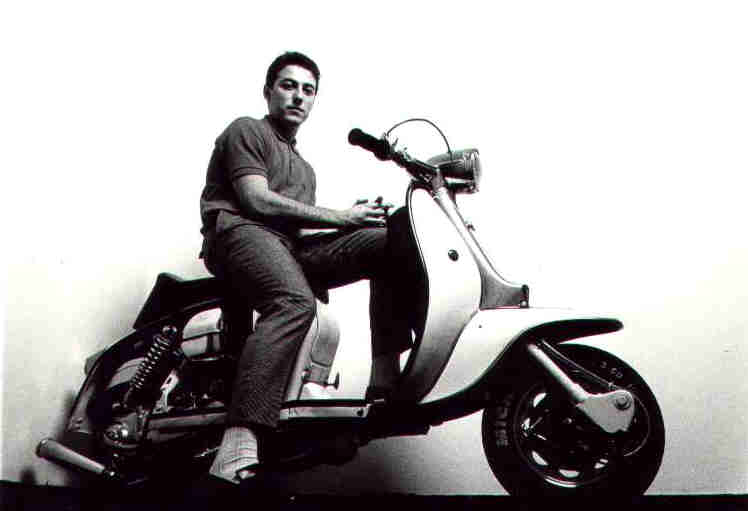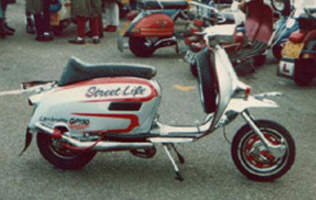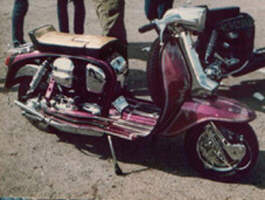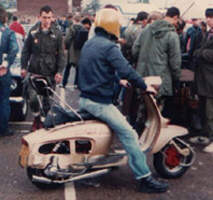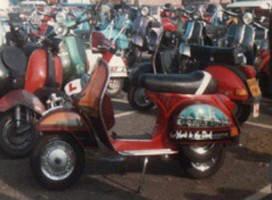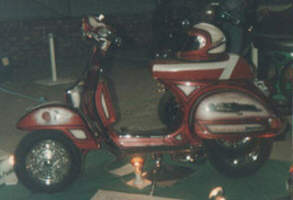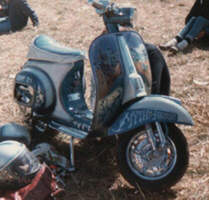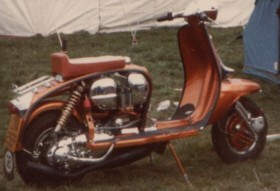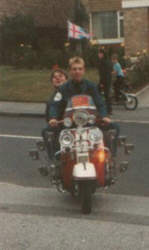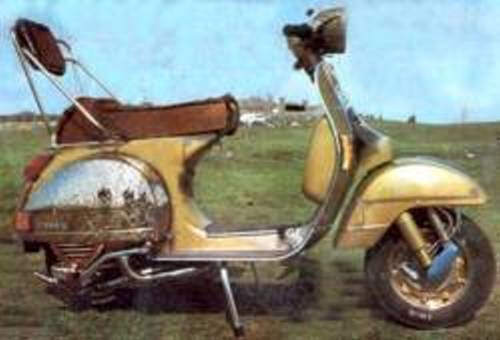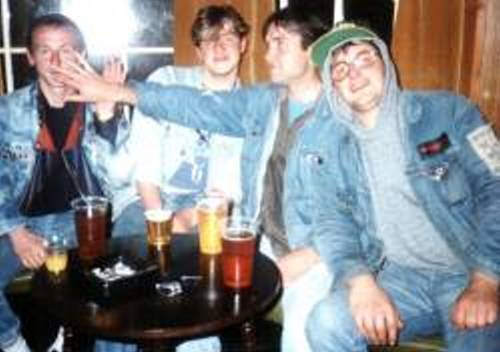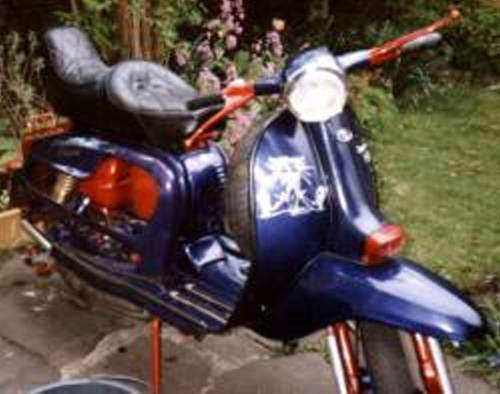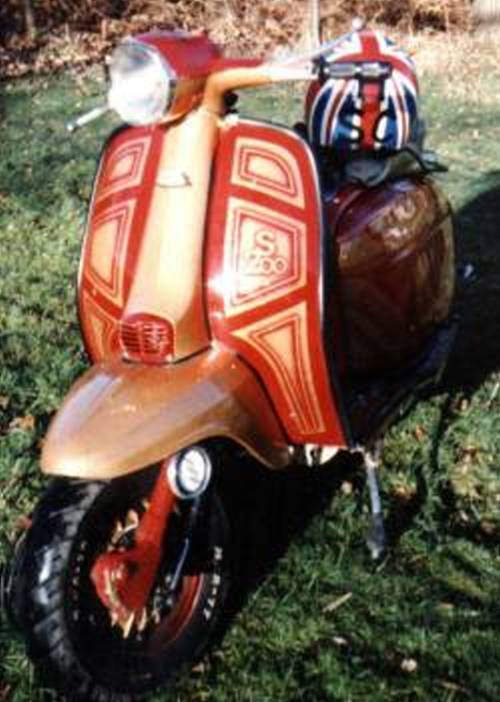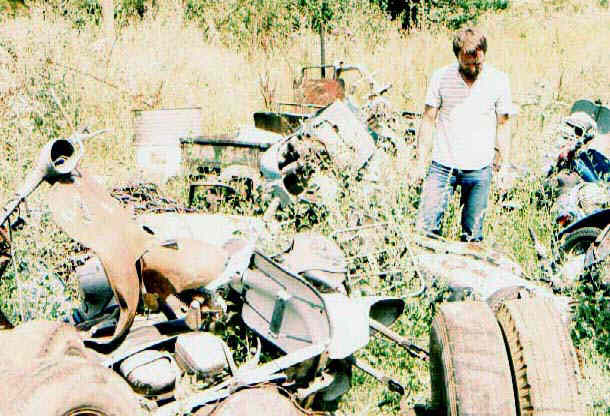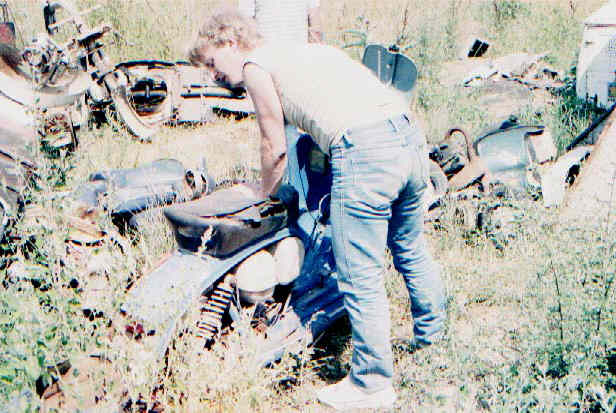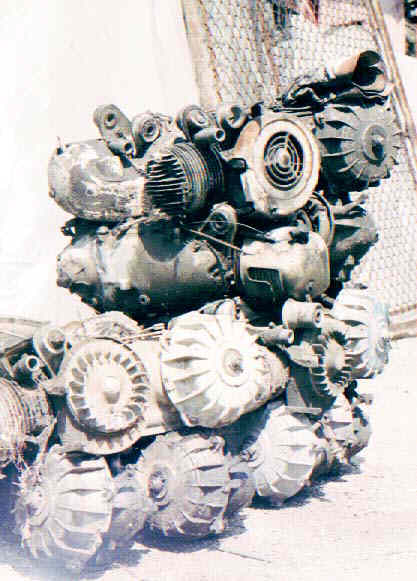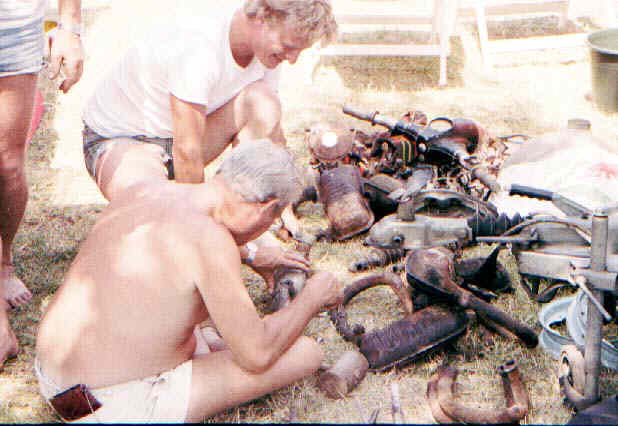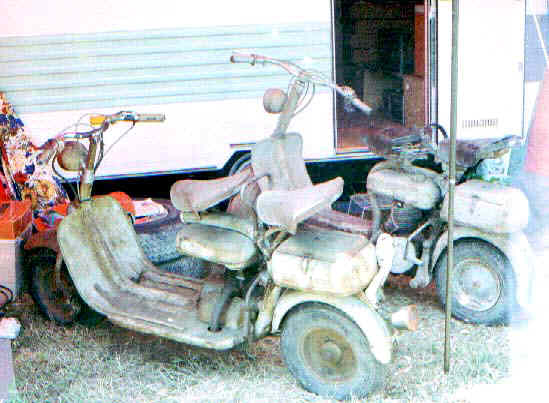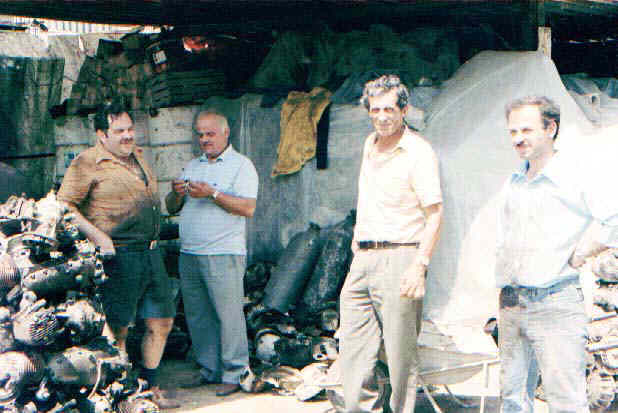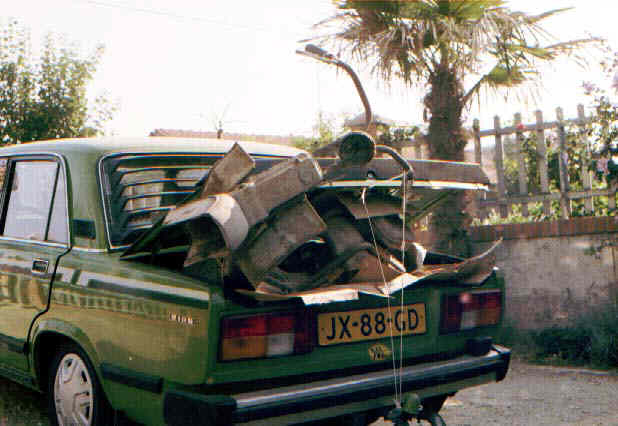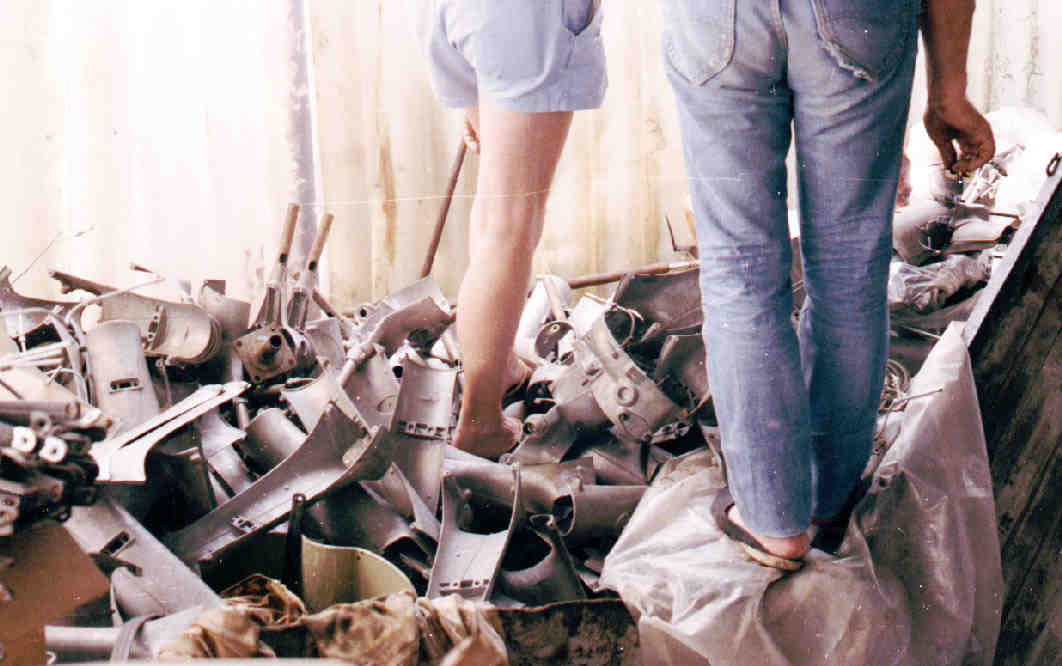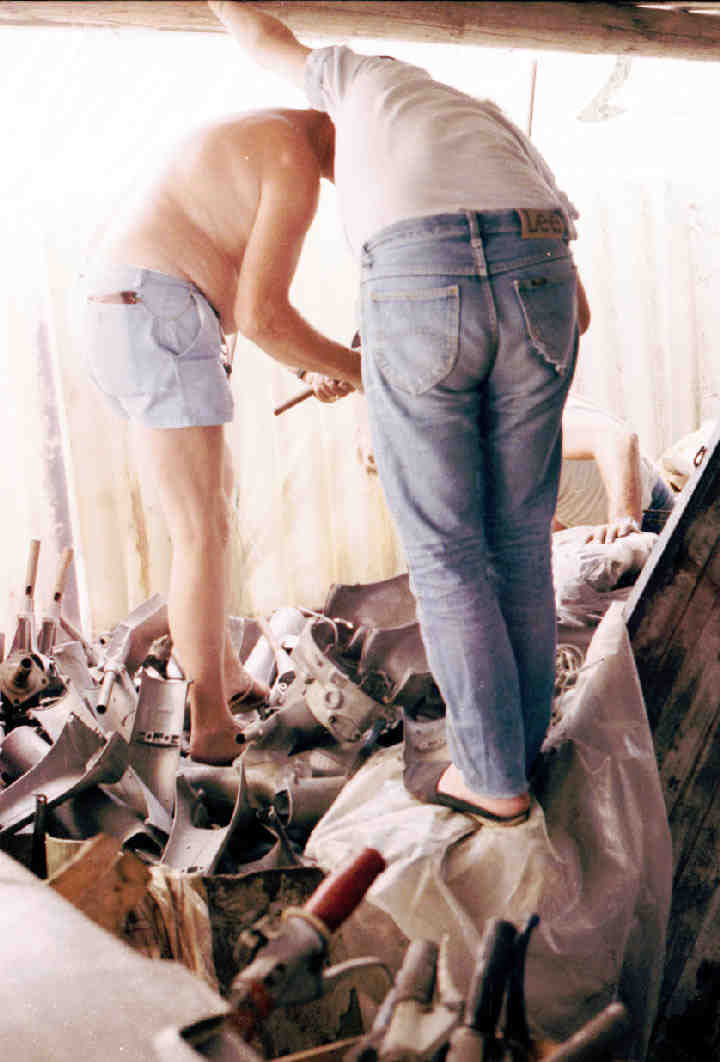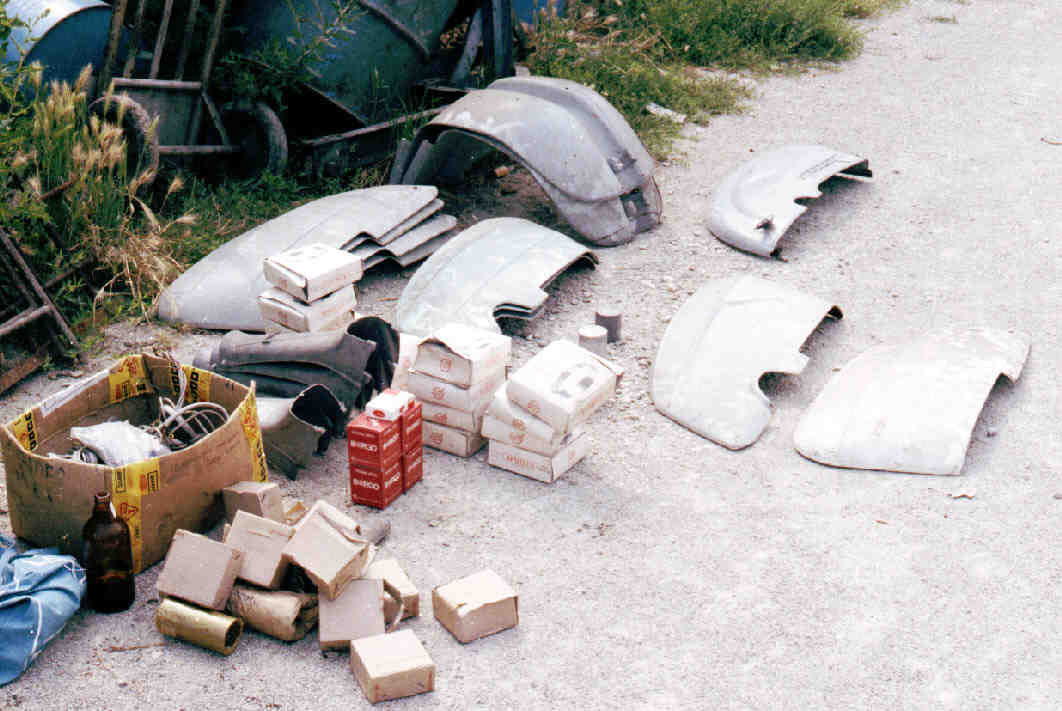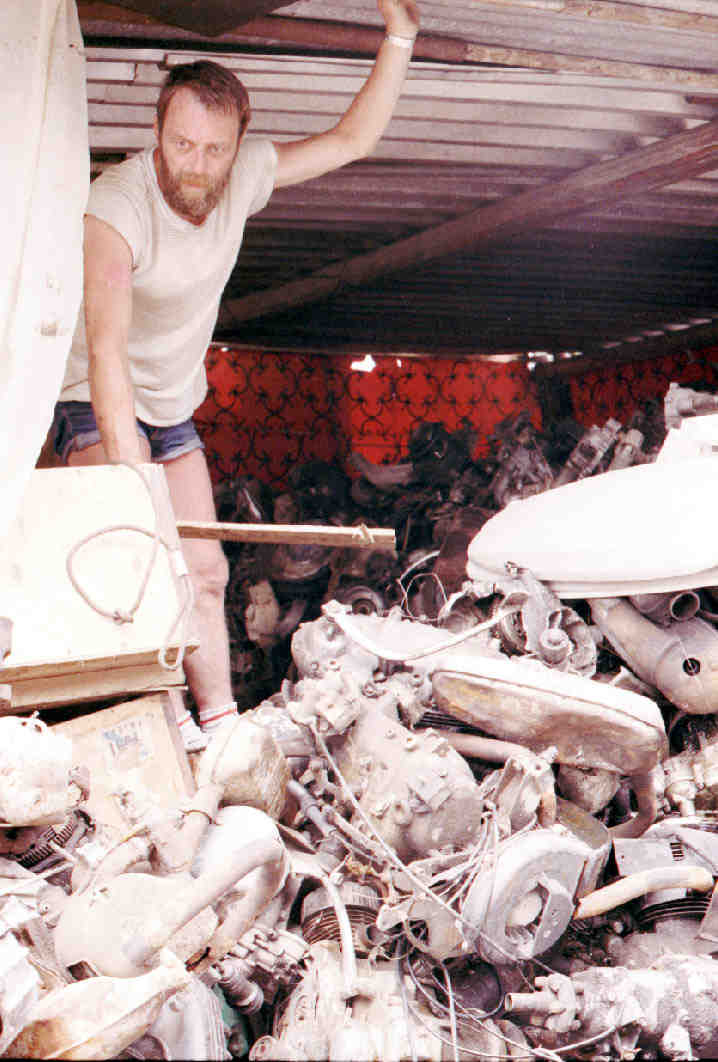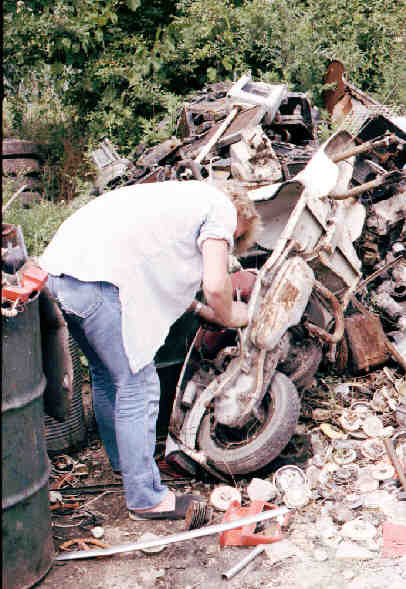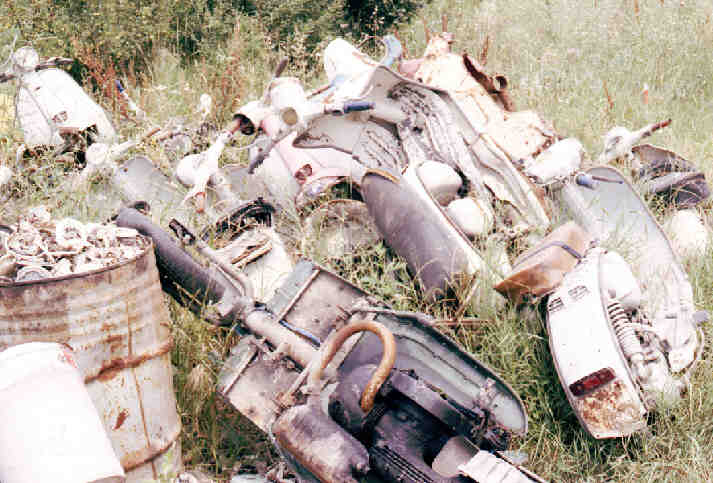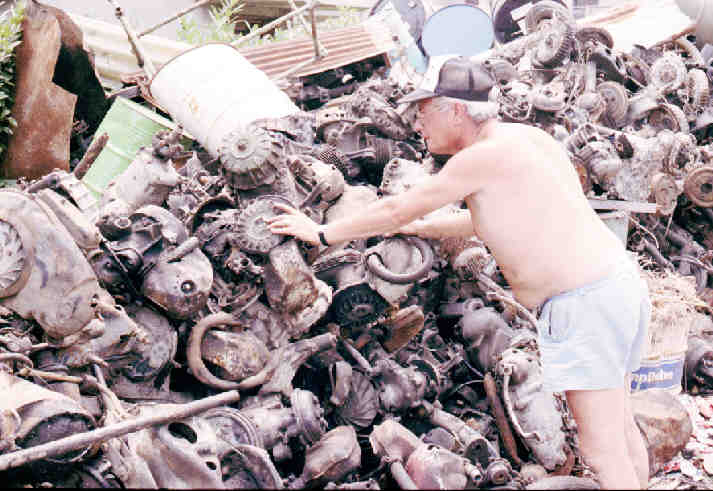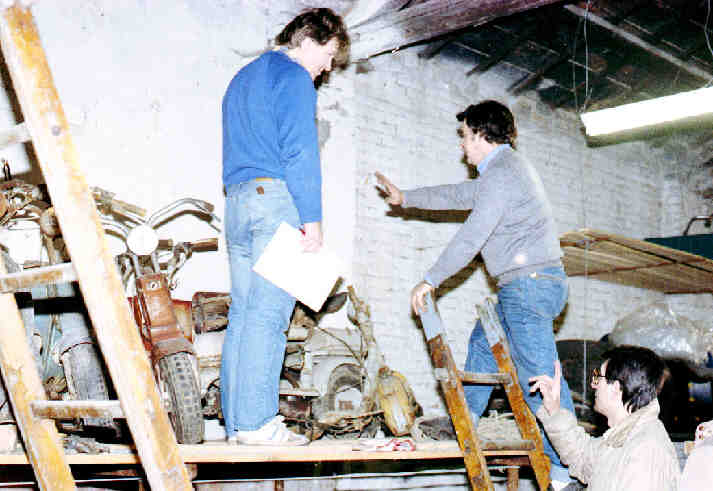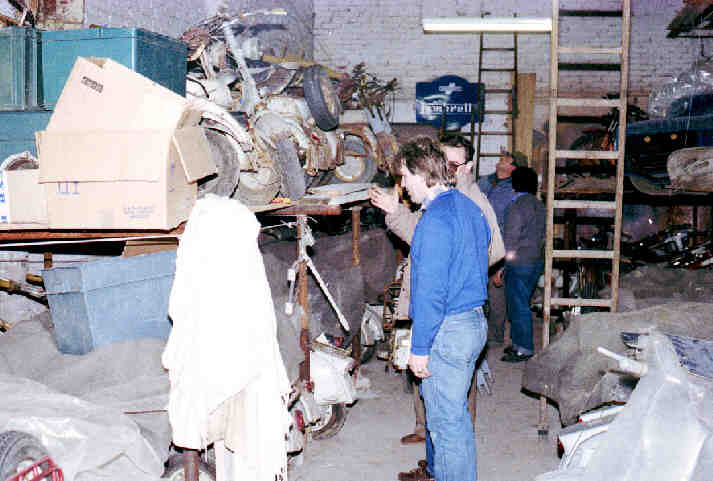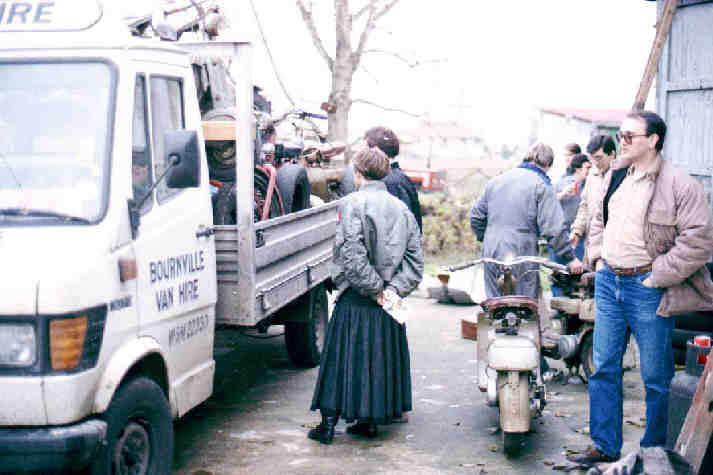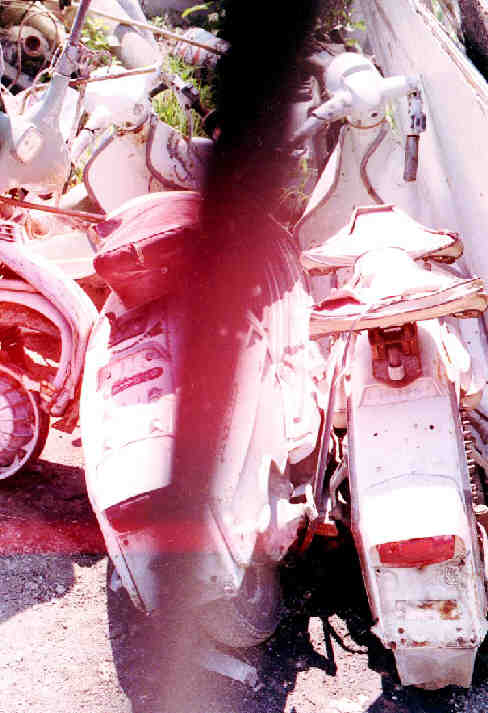|
Around 1978/1979
there was a well publicised revival of the 60s Mod fashion. This lead to
a resurgence in interest in the traditional type scooter. In the UK at
the time there was still an amount of interest in scooters in the North
of the country, mainly based around the remains of the northern soul scene
(a story in itself), although further south, around London in particular,
the scene was all but dead.
By the time I got
my first scooter in 82 the mod scene was already fragmenting, skinheads
and punks were riding scooters and bringing their music and clothes to
the scene.
Towards the middle
of 83 there was a definate spilt among fashion lines, with the mod element
seeing scooterboys as scruffs who should really be riding motorbikes and
the scooterboy who saw mods as old fashioned pretentious twats.
From 83 to 86 there
was a lot of fighting between the two sides of the scooter riding scene,
leading to the formation of the National Runs Comittee - NRC-(which
later became the National Scooter Riders Association - NSRA)- which was
originally a part of the Lambretta Club GB (LCGB) on the scooter
boy side and the starting of the Pheonix List on the mod side. Both were
responsible for organising rallies, which up to this point had been on
an ad hoc basis, mainly invasions of seaside towns at random, sometimes
three or four on the same weekend.
Around this time
there was a change on the scooterboy side in the music policy, going away
from the traditional Northern soul and into Trojan Ska, 2-Tone ska, punk
and Psychobilly, and the haircuts changed from the crop towards the shaven
head, the psychobilly quiff and the mohican, and Dr Marten boots became
de rigeur. The introduction of the Paddy Smith rally patch, only available
on the rally they marked, showed your dedication to the scene. The flying
jacket and denim came in largely from the skinhead scene, and were replacements
for the mod parka or the the soulies greatcoat. Although no warmer or waterproof,
they were 'ours', and one covered in Paddy's was a prized possesion.
The rallies themselves
were great fun, turn up, pitch your tent, wait for the pubs to open, drink
beer until the three o'clock shutdown (unless you had a b&b with a
bar) which gave you an excuse to hang around tthe town annoynig each other
and the locals, frequently getting arrested for drunk and disorderly offences.
Once the pubs opened
again it was more usually beer, maybe some amphetemines if your taste was
for pharmacuticals, beer, beer and more beer and then off to the highlight
of the weekend, the all-nighter. This was variously a place to drink more
beer, dance, consume drugs, fight or, if you were lucky, shag a scootergirl.
I have this memory of a friend sitting at a table with some girl he had
met sat on his lap moving up and down in time to the music..... Lucky sod!
Eventually the nights
excesses took over,and, if you hadn't passed out, it was time to head back
to the tent, stopping only to fight with the locals and avoid getting arrested
by the police.
Up in the morning,
stuff a slice of rancid dog disguised as a burger down your throat, two
paracetemol and off home. If you were unlucky the police would stop you
and breath test you. Kiss your licens goodbye, but that didn't stop you
from riding your scooter.
As time went by cannabis
became a major influence on th scene, bringing skinhead reggae to the fore
on the music scene, and kissing the punk side goodbye to a large extent.
interestingly it seems to be making a comeback now, along with severely
modified scooters.
And on that note,
I'll finish. The history of the more important side of the scene - the
scooters themselves - can be summerised in 'mod scooter-bonedown-cutdown-chopper-full
blown paint and chrome and back to standard and modded (ironically enough!)
Nik - FB www.scooterboy-world.com
|

